During National FFA Week it is likely that FFA members will be wearing their jackets. The old saying “two peas in a pod” might be appropriate because the jackets will be consistent in appearance. However, that was not always the case. There was a good bit of variability in the past, especially in the letters on the back. In this Friday Footnote, Dr. Jim Connors from the University of Idaho will explore the differences. Take it away Dr. Connors.
What’s On Your Back
James J. Connors, PhD
Most people involved in agricultural education and the FFA are very familiar with the blue corduroy jacket, the visual symbol of the organization. There have been many stories written about how the jacket was first introduced and became widely popular among local FFA chapter members.
However, most people have probably never given much thought to the back of the jacket. Sure, if you look at the back of current jackets you will see the STATE above the FFA emblem and the CHAPTER below the emblem. But was this always the case? Let’s delve into the back of the FFA jacket.
As you probably know, the first FFA jacket was created by J. H. Lintner for his Fredericktown (OH) FFA Band members in 1932. The first jackets only had the FFA emblem, minus the eagle, hand embroidered on the back. There was no identification of state or chapter.
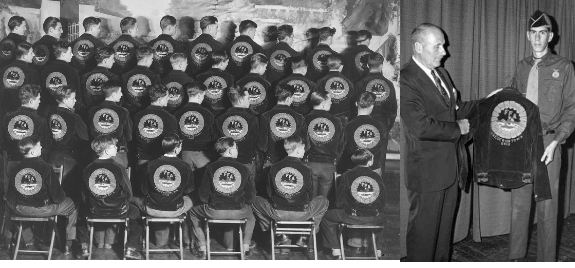
Figure 1. Left image – Fredericktown, Ohio FFA Band, right image – Gus Lintner
A second experimental jacket was produced with Fredericktown Ohio below the emblem. When the eagle was officially added to all FFA members, there was a need to center the emblem on the back of the jacket. This allowed room for lettering both above and below the emblem.
The popularity of the blue corduroy jacket spread quickly. The Proceedings of the Seventh National FFA Convention in 1934 included a report from the Uniform Committee which stated, “We offer for the approval of this organization, a uniform type of corduroy jacket with F.F.A. seal embroidered on the back in fast colored thread. These jackets are now worn by the Utah Band” (p. 26).
Two years later, at the Ninth National FFA Convention in 1936, the Uniform Committee reported that, “We also suggest that the jacket with the emblem on the back be used and that arrangements be made for standardized lettering to include, when appropriate, name, state, town, and office held by the individual, if any” (p. 35).
However, the addition of the STATE and CHAPTER names was still not standardized. The oldest jacket in my collection came to me from the family of Claude Gifford, relative of Dr. Susie Whittington of The Ohio State University. Mr. Gifford was the State President of the Iowa FFA Association in 1937-1938. However, his jacket is unique in that it is embroidered with Iowa (top) and Chapter (bottom). Other FFA jackets could be found with the CHAPTER name on top and the STATE name below the emblem.
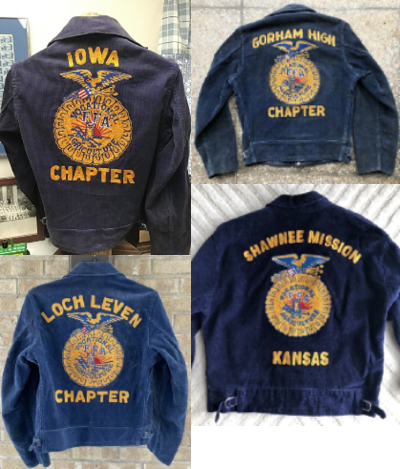
Figure 2. Top Left – Claude Gifford, Top Right – Gorham, Maine,
Bottom Left – Loch Leven, Wyoming, Bottom Right – Shawnee Mission, Kansas
One unique jacket pictured below includes the CHAPTER name above the emblem and the Town/State below the emblem. This jacket also includes a school letter on the front with FFA embroidered on it.
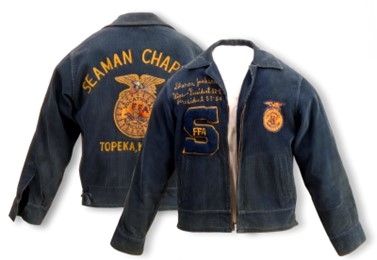
Figure 3. Seaman Chapter/Topeka, Kansas
Yet another configuration of lettering includes the CHAPTER name on top and FFA below. The photograph below is from the front cover of The Future Farmer Magazine in Spring 1954.
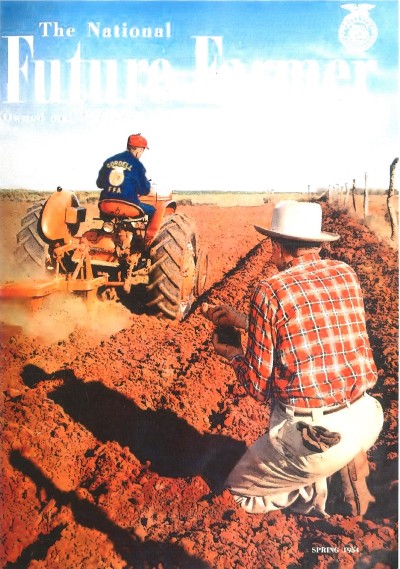
Figure 4. Cordell, Oklahoma
It took until the 12th National FFA Convention in 1939 for the delegates to standardize the back of the jacket. It was “Moved by Slettom of Minnesota that the recommendations concerning a standard way of identification on uniforms by having the State’s name above the emblem on the jackets and the chapter name below the emblem, be referred to the Uniform Committee” (p. 21). The Uniform Committee in its report accepted the recommendation.
However, there are many instances where other identifications are commonly seen. These include:
- National FFA Officer Jackets – Emblem Only
- State FFA Officers – STATE/Association
- District FFA Officers – STATE/Region/Area/District
Figure 5. From left to right – National Officer, State Officer, Regional, Area or District Officer
During the 1960s – 1980s the National FFA Band and Chorus members were also given special jackets designating them as members of these prestigious groups.
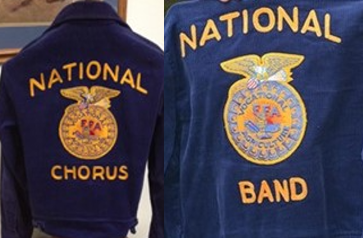
Figure 6. National Chorus and Band Jackets.
The New Farmers of America also had some unique embroidering on the back of their black and gold NFA jackets. Below you will find an NFA Chorus jacket and Miss NFA jacket.
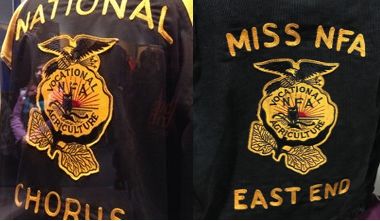
Figure 7. NFA jackets
The jacket in the photograph below is quite unique. It is embroidered with Future Farmers of America above the emblem and FFA Foundation below. This was on the front cover of the Agri Marketing magazine in September 1970. The magazine contains an article titled: Reservoir for tomorrow’s leadership: FFA Training Programs and Activities Mold Interests and Traits of VIP Quality. However, there is no explanation about the photograph or the jacket.
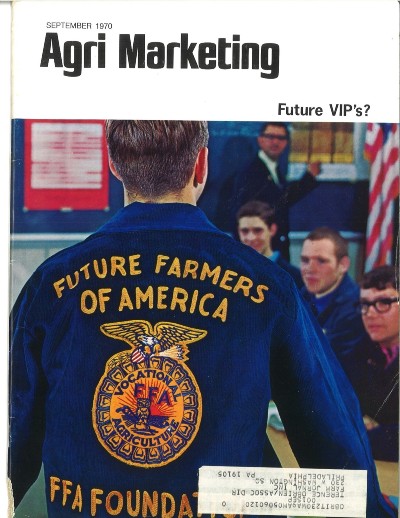
Figure 8. An unusual FFA jacket
Concluding Remarks
It has been said that the front of the FFA jacket represents who the member is. Their name, offices held, awards, etc. But the back of the jacket identifies who he/she represents. Is it their chapter, district, state, or even a special FFA group. While most FFA jackets throughout history include the STATE and CHAPTER names on the back, history has shown us that over the years there has been many different configurations of embroidery on the back of FFA jackets.
Curator’s Note – Next week will explore the psychology of the FFA jacket and that will be followed a week later by a FFA jacket quiz. So you better start studying.
References
Blue corduroy (2003). Blue Jackets – Gold Standards: 75 Years of living the FFA legacy. M.T. Publishing Co.
Future Farmers of America (1934). Proceedings of the Seventh national convention. U.S. Office of Education.
Future Farmers of America (1936). Proceedings of the Ninth national convention. U.S. Office of Education.
Future Farmers of America (1939). Proceedings of the 12th national convention. U.S. Office of Education.
Lintner, J. J. (1951, October). First F.F.A. jacket. The Agricultural Education Magazine, 24(4), 95.
Lintner, J. H. (1978, Jan. – Feb.). How the FFA jacket came into being. Ohio FFA News. Ohio FFA Association.
Nunemaker, O. (1955, Winter). The birth of the FFA jacket. The National Future Farmer, 3(2), 45.
Once blue, forever blue (2013, Fall). FFA New Horizons, 61(1), 8-13.
Tenney, A. W. (1977). Adoption of official uniform. The FFA at 50. Future Farmers of America.
